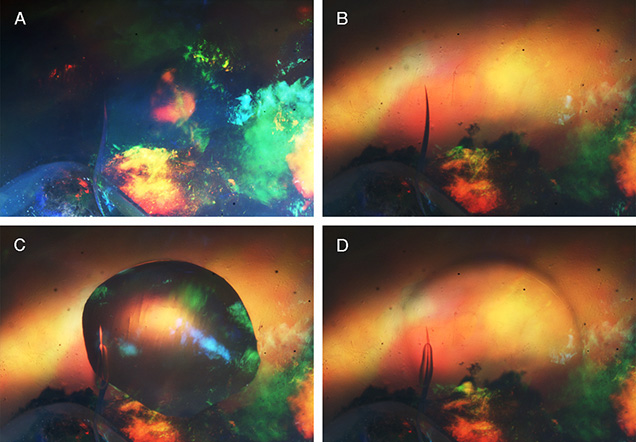A Useful Technique to Confirm the Hydrophane Nature of Opal
With white or colorless opals, checking for dye is not necessary, but the gemologist may find it valuable to determine if they are hydrophane so the client can be warned to avoid immersing them in liquid. Micro inclusions often present in these stones are sometimes the source of minute internal cracks. When these opals are saturated with water, the cracks often enlarge due to the strain and propagate through the entire stone. In these cases, the only option is to recut several small stones from the broken fragments.

This Ethiopian hydrophane opal with a small crack was examined at 15× magnification in reflected light (A). The lighting environment has been changed to direct transmitted light or brightfield illumination by opening the baffle in the microscope well (B). A drop of water placed on the surface (C) and absorbed by the stone creates an optical aberration (D) that confirms the opal’s hydrophane nature. Note that the water has also produced a more pronounced optical aberration in the crack. Photos by Nathan Renfro.
To safely determine if an opal is hydrophane and avoid further propagation of existing cracks, the stone should be examined using a standard gemological microscope and direct transmitted light (with the microscope in brightfield mode). Simply place a single drop of water on the surface and observe how the water drop interacts with the opal. After a few seconds of allowing the water to either evaporate or soak into the stone, reexamine the appearance. If the water is absorbed into the stone, that area’s refractive index will be slightly different, creating an optical aberration where the drop is placed and confirming that the stone is hydrophane. This method poses less risk of breakage than complete immersion.
.jpg)


